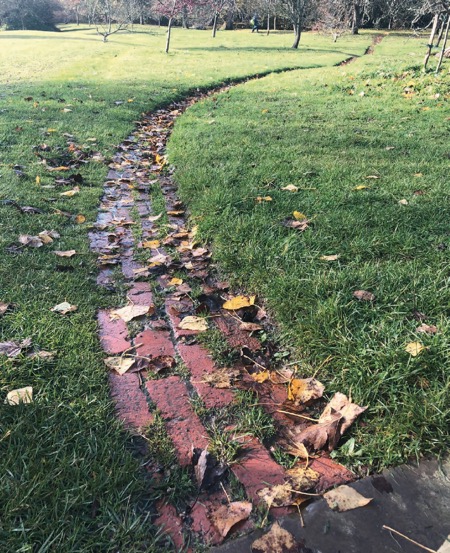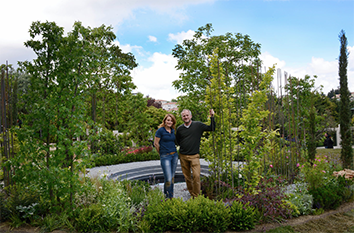Hidden geometry and inner harmony
19/12/18 00:20 Filed in: Gardening
Emanuela Alladio and Jon Sims of Alladio Sims Garden Landscape Design look at the importance of applying the basic rules of geometry to the composition of a garden space.
A recent trip to Great Dixter a few weeks ago confirmed that winter really is the perfect time to look at the hidden geometry of a garden, when vegetation takes a step back and allows the existing voids to create inner harmony for the new season ahead.Despite a general sense of decay and emptiness in the garden, this time of the year is not one for relaxing and letting things happen, as it actually coincides with the start of the new horticultural year. If everything going on above ground may look as if plants are shrivelling and wanting to disappear – and many do, indeed, go on a long sleep or dormancy period to regain their energy before spring arrives – below the ground it’s a completely different story; plants are getting stronger and everyone working around gardens is or should be planning ahead and working frantically before the first of the frosts arrive: moving plants to create fuller, more pleasing displays, dividing and repotting, ordering bulbs and planting new shrubs and trees.
This is by far the best time to look at the geometry behind borders, before the fluffy growth of new vegetation obscures and weakens it: it’s the time to take stock and examine lines and proportions carefully. After all, a garden can only feel right if its geometry is right. This was the overall message from the latest Society of Garden Designers Autumn Conference.

This narrow path with its sinuous curve introduces a strong geometry that carefully shapes this informal part of the meadow creating a pleasing long view that disappears in the distant woodland IMAGE COURTESY OF ALLADIO SIMS GARDEN AND LANDSCAPE DESIGN LTD, GREAT DIXTER GARDENS 2018
That said, how do we know if the geometry is right? At the conference there was a general sense of ‘if it feels right, it’s right – you will instinctively know if a path is in the wrong place or not, if it’s too wide or too narrow’. Yet looking at some of the slides during the conference, I started to disagree with this approach and decided that in order to produce a pleasing geometry in a garden one might benefit from applying the basic rules of geometry to the overall composition – an example would be the Fibonacci sequence and the Golden Ratio allowing us to create pleasing proportions – and only once these are set are we allowed to disrupt the rules and balance by introducing a few unexpected and exciting ‘deviations’.
To base our approach on geometry, following the principles that Fibonacci explained a few hundred years ago, we can be sure that we are mirroring the perfection found in nature – that of a fern unfurling, the curve of a shell, the structure of an artichoke – these are all perfect renditions of the Fibonacci curve and serve as a reminder that nature is based on its own very specific inner harmony.
This is the perfect time to take stock of your garden, so go out and take a good look at those hidden lines and proportions, and make a note of any gaps that seem too big, or paths too straight or narrow, but above all don’t forget to enjoy the subtle beauty that a garden has to offer even at this time of the year.
 Jon and Emanuela in the show garden they created for the Istanbul Flower Festival in 2016
Jon and Emanuela in the show garden they created for the Istanbul Flower Festival in 2016Profile: Alladio Sims
Alladio Sims Garden Landscape Design Ltd was established in 2015 after Jon Sims and Emanuela Alladio collaborated on a Silver Gilt winning show garden at RHS Hampton Court Palace Flower Show. The two directors continue their collaborative approach throughout their practice with Jon’s background in interior architecture giving distinctive spaces and Emanuela’s passion for plants and photographic eye adding great texture and contrast.
essence info
Alladio Sims Garden Landscape Design Limited
Unit C Willow House, Dragonfly Place, London SE4 2FJ
Website: www.alladiosims.co.uk
Email: hello@alladiosims.co.uk